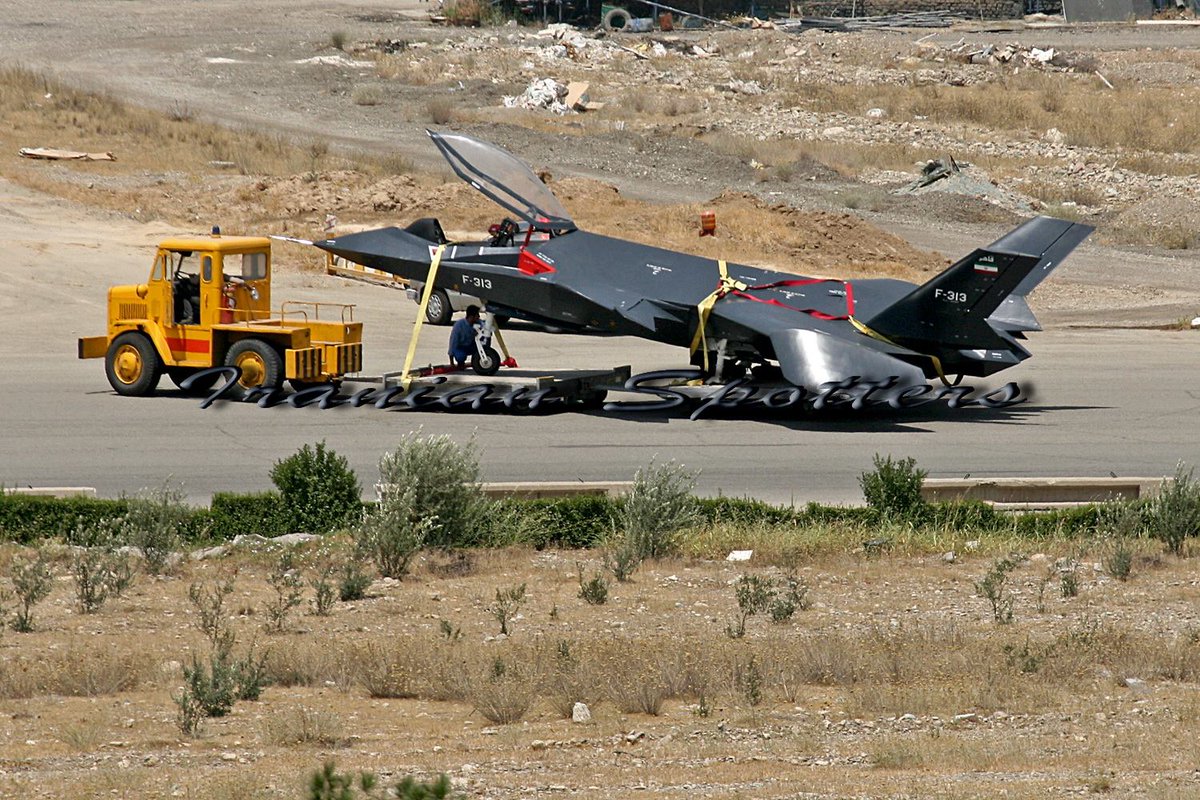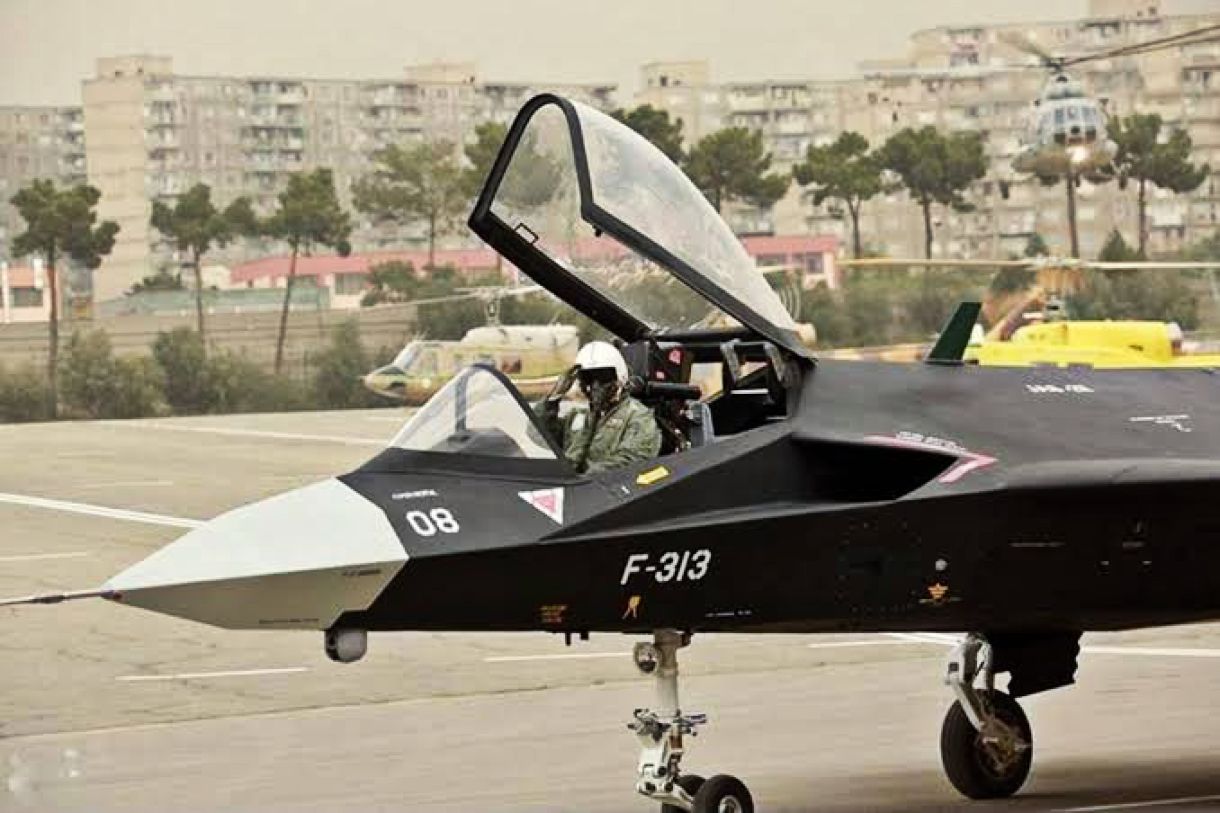Over a decade ago, Iran claimed rolling out its “fifth-generation” Qaher-313 stealth fighter jet, projected as the country’s most advanced warplane. An Iranian defense ministry now says the country is ready to convert this stealth fighter into an Unmanned Aerial Vehicle (UAV).
The managing director of the Iran Aviation Industries Organization (IAIO), a subsidiary of the Defense Ministry, said on television that the Qaher fighter jet project had reached full technological maturity, Tasnim News Agency reported.
General Afshin Khajefard announced in his address that the Defense Ministry is focusing on the diversity of the finished product, emphasizing that the Qaher fighter jet will eventually become a pilotless aircraft.
The announcement comes after the extensive deployment of Iran’s Shahed-class kamikaze drones in Ukraine, which have successfully struck Kyiv’s energy and military infrastructure. In addition, Iran has ramped up its UAV industry in recent years, a feat that it takes great pride in.
The Iranian official also stated that in the next Iranian year, which starts on March 21, the country would introduce several Qaher iterations. He highlighted in his speech that the Defense Ministry had modified the stealth aircraft.

The announcement is ambitious as the country still operates a fleet of American F-14 Tomcats, F-5 Tigers, and F-4 Phantoms which are at least four decades old, in addition to the MiG-29 purchased from Moscow in the 1990s.
Iran’s fighter jet fleet has been aging rapidly, which it has been able to maintain without US assistance.
However, despite the strides made in domestic military manufacturing and maintenance of old aircraft, doubts have been cast on Tehran’s ability to produce a stealth aircraft of the fifth generation indigenously.
Western military commentators have gone so far as to say that the country unveiled the stealth aircraft to compensate for its outdated fighter fleet and was merely a propaganda exercise.
When Iran unveiled the prototype of this aircraft, which has been under development since 2013, aviation experts across the globe dismissed it with the argument that Iranian construction of the jet would be impossible due to a lack of analytical and sensor technologies in Iran.
The jet first met with suspicion, quickly gained notoriety among military aficionados who mocked it as a crude mock-up and a publicity ploy meant to dazzle the home market, as previously noted by EurAsian Times.
However, despite the global skepticism and dismissal of its homegrown “stealth aircraft,” Iran has continued to work on the program and decided to convert the small airframe into a drone instead, which comes against the backdrop of a burgeoning UAV manufacturing capability and global interest in its combat UAVs.
What Do We Know About The Iranian ‘Qaher’?
Iran’s presumed stealth fighter ‘Qaher’ was rolled out almost a decade ago at a staged event in February 2013. The country first presented the jet prototype four years later, in 2017.
At the time, Iranian officials claimed that the aircraft could carry a 2,000-kilogram bomb or at least six air-to-air missiles.
Yet, the slim, single-engine, single-seat aircraft with the anhedral wingtips and non-stealthy front canards seemed somewhat uncanny. Experts suggested that the subsequent video evidence of a purported “test flight” merely showed a small drone. It is noteworthy, thus, that Tehran is converting Qaher into a drone.
According to reports from the time, single-engine aircraft had too many engineering problems. They were too small to be considered a fourth-generation jet, let alone a fifth-generation stealth aircraft. Experts joked that Qaher-313 resembled a movie prop more than a jet fighter from the twenty-first century.

An analysis of the earlier jet published highlighted that the Iranian ‘Qaher’ had sharp edges and recognizable angles and edges of the American F-22, besides a twin tail form quite similar to that of the F-35 Lightning II.
Further, it sported large fixed canards, with the external section of the little wings canted downward.
After studying the photos and videos of the supposed stealth aircraft, military and aviation experts opined that the aircraft’s cockpit appeared very peculiar, with fundamental and non-‘fifth-gen’ instrumentation, no wiring on the front panel, and a setup resembling that of a small private plane.
The nose part of the Qaher-313 was designed to be so small that hardly any radar could fit inside it. The air intakes, the most crucial component, were comparable to those of small drones. Most importantly, it was observed that the jet did not have a nozzle which would lead to the entire aircraft being melted by the engine’s afterburners.
Iran also tried to reinforce confidence in the global military community by releasing a video that showed the fighter jet flying. However, it was busted as a lousy attempt at photoshop within hours.
Iran has been denied essential equipment and technology needed to modernize its military due to the years-long arms embargo enforced by the US and its allies. Although the nation made quick strides in developing missiles, creating a fifth-generation fighter jet that could contend with its competitors’ better air superiority has been labeled a pipe dream.
However, it may be pertinent to highlight the Iranian official’s statement that the Qaher has since been modified. It would be interesting to see the outcome, in the form of a drone which seems apt given the Qaher’s size, when it is finally unveiled next month.
- Contact the author at sakshi.tiwari9555 (at) gmail.com
- Follow EurAsian Times on Google News




